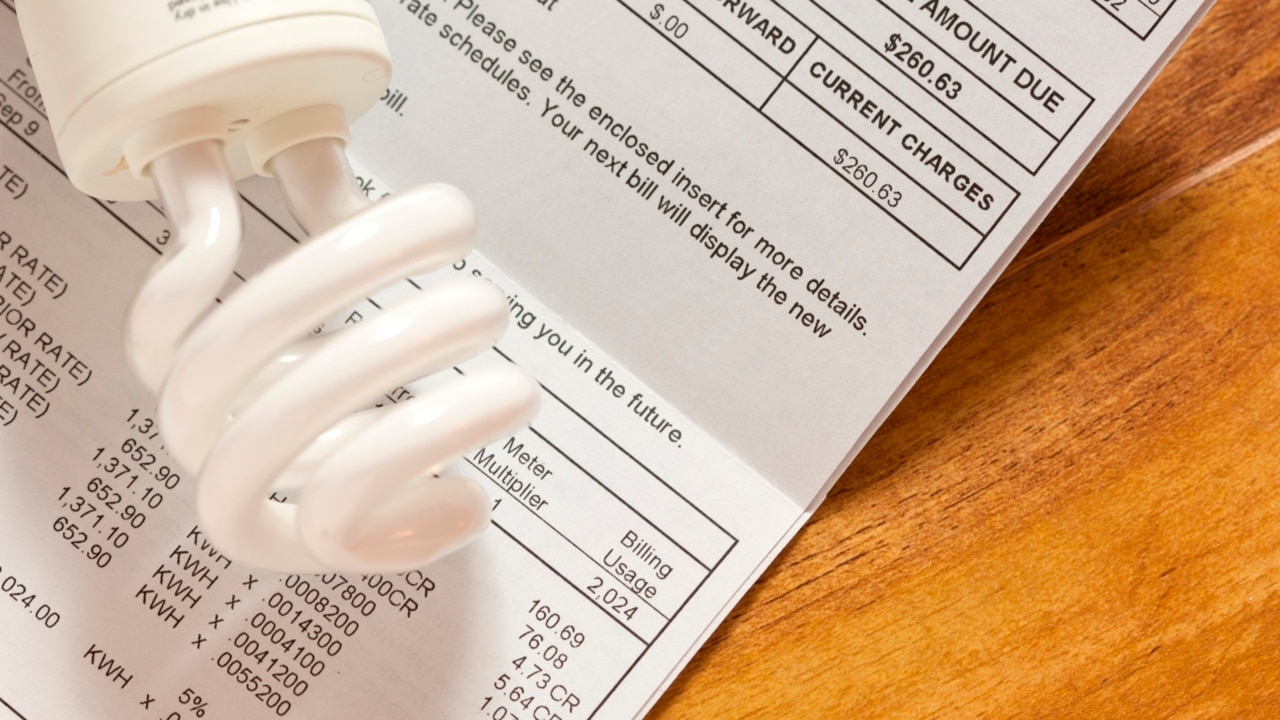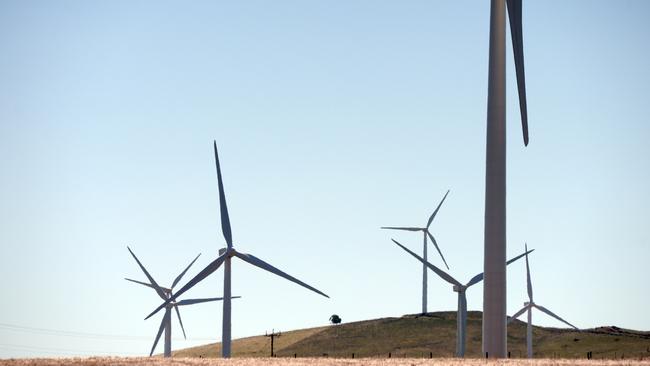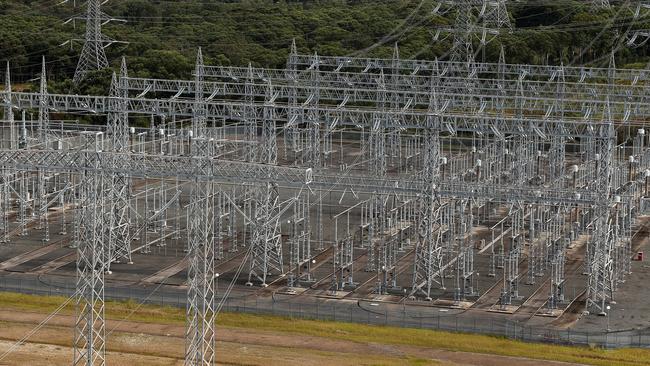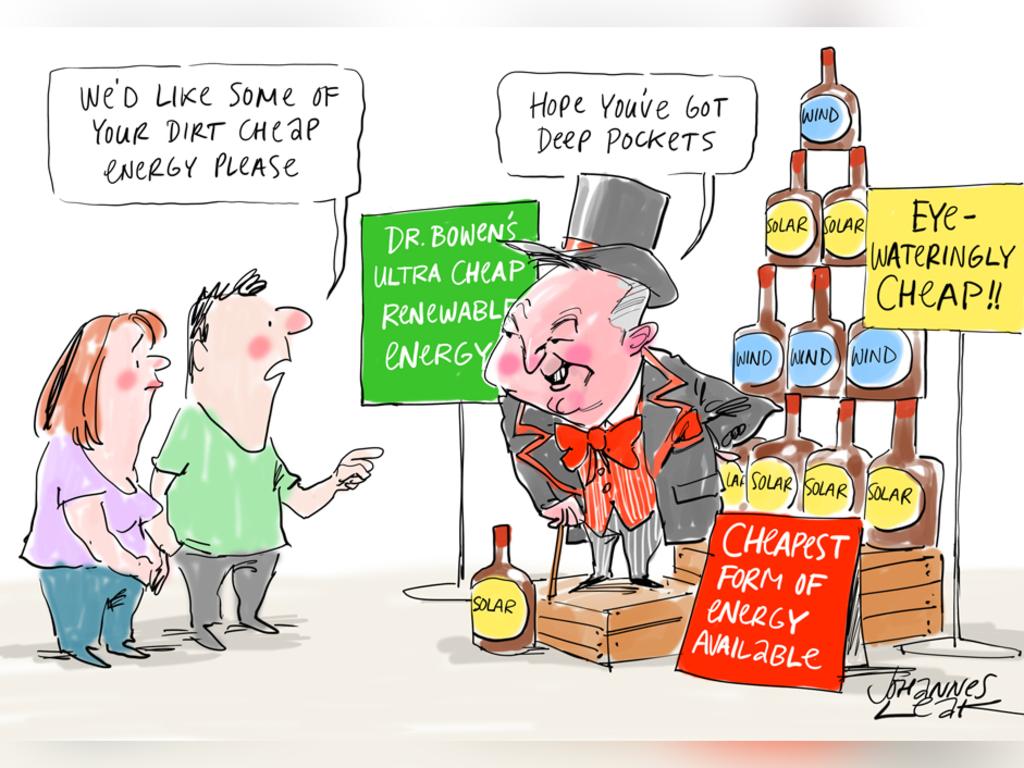Intervention in the energy market may have unintended consequences

Does anyone in the energy market honestly still believe that by 2030 the federal government will reach its zero emissions target and bring down the cost of home energy bills? That the transmission rollout to connect up renewables will be done by then?
Many in the market do not.
Government intervention in the energy sector has happened at the federal and state level, from the Domestic Gas Supply Mechanism to the building of Snowy 2.0 and the latest move in Victoria to recreate the old State Electricity Commission.
The unintended consequences of the government building Snowy 2.0 is that it took private investment in renewables out. Now it is late on renewables delivery.
Credit Suisse’s Saul Kavonic says many of the unintended consequences of intervention warned about years ago are now coming to fruition. “Federal and state governments have made a mess of the power market over the last decade, and are now looking to make a mess of the gas market,” he says.
Within the National Energy Market, gas sets the price for perhaps 30 per cent of time – partly because hydro power is priced off gas. But coal prices are also up, thanks to global pressure and local flooding.

At different times, the supply of coal – contributing 50 per cent of grid power – gas and renewables all affect the wholesale electricity price. It means any intervention could have unforeseen consequences, which the government is only beginning to get its head around.
Take the idea of a $10 per megajoule price cap on the gas sector, as called for by former competition commission boss Rod Sims.
The first risk is demand destruction. Marginal producers like Cooper Energy and Beach Energy in Queensland are simply priced out of the market.
According to Credit Suisse’s Kavonic, a $10 cap could see gas demand in the sector spike, causing structural shortages for manufacturing, and destroy incentives to invest that only leads to a bigger gas problem down the road.
The next risk is that existing LNG players only export to their contracts and produce not a molecule more. That could force the market operator to direct a shutdown of a big user like aluminium.
Moreover, at $10 per megajoule, coal is also priced out of the market. Why? Because Origin Energy’s huge Eraring coal-fired power station in NSW does not have long-term coal supply contracts. It has to buy on market.
On Monday the Newcastle coal export price for December 2022 delivery was $US350 a tonne. Allowing a 15 per cent domestic discount for quality, that is equivalent to $19.55 per gigajoule – double the $10 gas cap.

Other coal-fired power producers may have locked in supply contracts at far cheaper prices, but why would these players not hold back the coal and buy gas?
On Sunday, the ABC’s Insiders program homed in on the energy crisis with an interview with the Treasurer. Missing was any discussion on coal. Those advocating a $10 cap argue that if major export contracts need to be torn up to meet the dramatic increase in gas demand, then so be it.
Politically this is untenable. Australia’s future as a hydrogen superpower is premised on the export of hydrogen under contract to the very countries where we export gas: Japan and South Korea.
Commentary also mixes up the supply of gas to the grid for household electricity with supply of gas as an input for manufacturing.
The backdrop to the fractious relationship between gas suppliers and manufacturers is that gas requires billions in investment over long time horizons. Manufacturers contract gas on shorter terms.
It has been possible for some manufacturers to lock in three-year contracts at $10 in both 2020 and 2021 but by threatening to cap prices, the government has created an expectation of lower prices. It is a classic moral hazard.

Gas companies may be enjoying high prices at present but fertiliser businesses, among the loudest voices for cheap gas, are also making big profits due to global supply chain blockages.
In the end, a $10 price for gas looks unlikely but some mechanism in a mandatory code of conduct to stop spikes is coming. Some manufacturers may need special treatment.
For households, the news that electricity prices are going up first by 20 per cent and then 30 per cent has freaked everyone out. Missing in commentary on the cost of living crisis is that welfare payments are largely linked to inflation.
Of course being linked to inflation is not the same as being linked to energy price rises and targeted support may well be needed.
The government insists that cheaper power is coming with the transmission rollout that will link up renewable energy zones. It wants $58bn in private investment to match its $20bn.
Victoria’s announced $1bn SEC investment is a skinny deposit to deliver the offshore wind power and renewables hoped for by Premier Daniel Andrews. In the midst of this intervention, it is the private sector and super which are asked to stump up.







Jim Chalmers should be pleased at the media focus on how hard he should smash up gas producers. It’s a classic “look over here” when the problem is so much bigger and so much more serious.